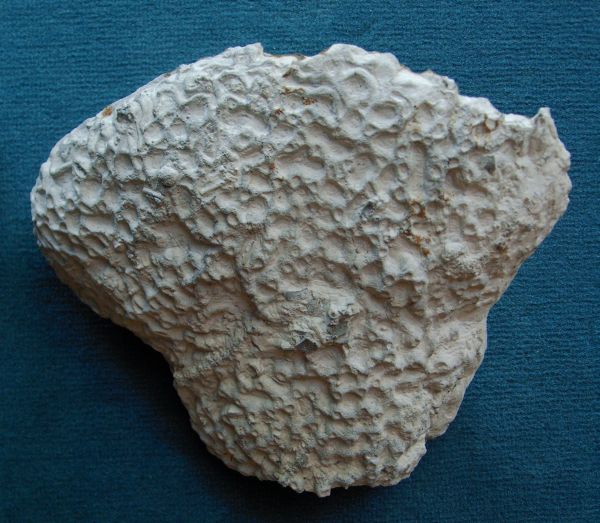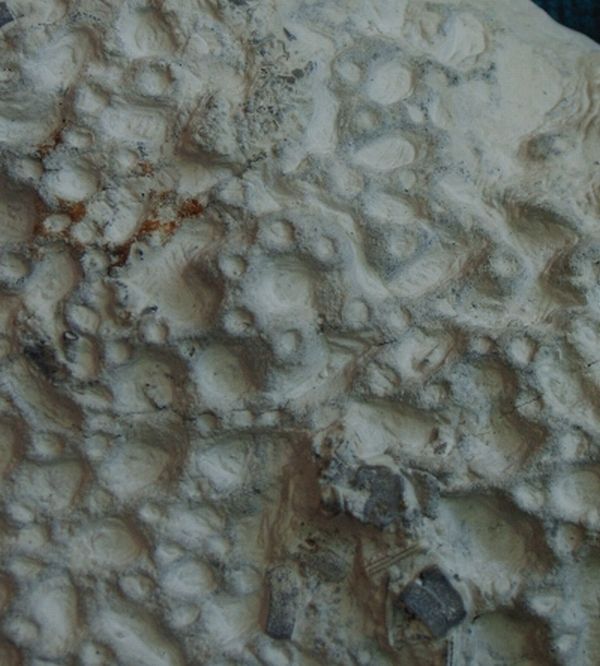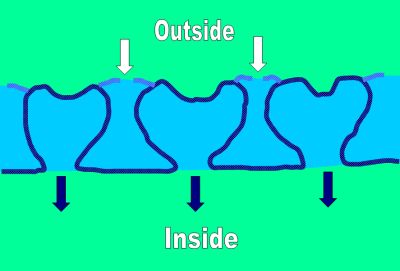
Centrosia regulare
Lagneau-Héranger 1962
This is the first report of Centrosia from the Misburg area.
Schrammen (1902) * discovered and described Centrosia incrustans from the Lower Campanian (Quadratenkreide) of Oberg (40 km ESE of Hannover) on the basis of 3 specimens. Centrosia regulare was described form the Aptian of Catalonia, Spain, by Lagneau-Héranger (1962).
The specimen shown here is probably closer to Centrosia regulare, since it is not an encrusting form, but rather a fragment of a large, bowl-shaped sponge.
The wall structure and canalization of Centrosia is complicated and difficult to reconcile with Schrammen's (1912) description in terms of "anastomosing tubes" (see below).

The wall of the sponge bowl is 10 to 15 mm thick, and is made up of a thin (2 mm), intensely folded sheet. The skeleton of this sheet is composed of fused lychnisks with smooth arms, which are arranged in a regular grid of cubic meshes.
The inside surface of the bowl is quite smooth in general, but shows many irregularly disposed, but approximately equidistant (15 to 20 mm apart) circular depressions (approx. 6 to 8 mm wide), which are the bases of the mushrooming folds visible on the outside of the sponge bowl.
The peculiar pattern of the outer side of the sponge bowl is made up of refolded mushroom-folds. The heads of these mushrooms are depressed and give rise to the larger (8 to 15 mm) "holes" on the outer sponge surface. These larger depressions are surrounded by four to six smaller (4 mm) holes, which are separated from each other by small "bridges". The function of these bridges is probably to stabilize the structure.

Proposed wall structure and canalization of Centrosia regulare.
Light blue: Sponge wall with cavities
Dark blue: Folded sheet (skeleton)
Medium blue: Bridges (skeleton) with small openings
Black arrows: Out-currents at internal wall of sponge bowl.
White arrows: In-currents through round openings between bridges on external sponge wall.